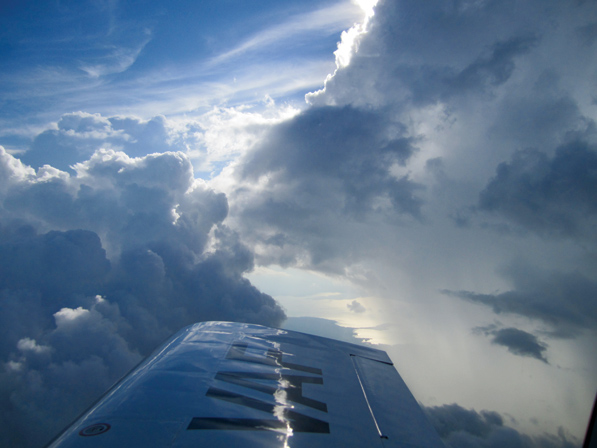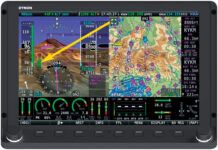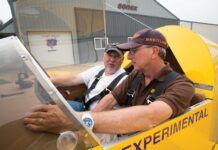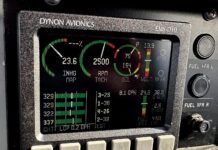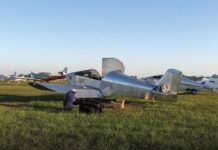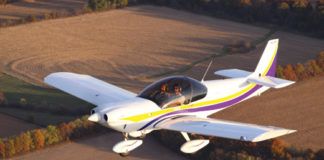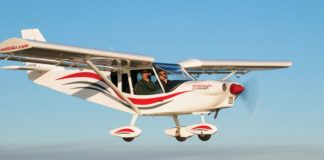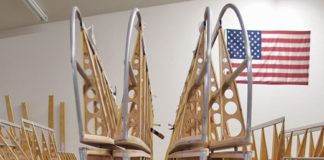I am not sure I can remember exactly when I first climbed above the clouds in an airplane, but I am pretty certain that I was alone when it happened-and the memory of the view is vivid. For some reason, student pilots flying VFR are always assumed to be creatures of the earth, or at least the air close to it. Weather reports give the heights of the lowest layer of clouds, and students are expected to stay below them-be they overcast, broken or scattered. I learned to fly in a J-3 Cub, so we didn’t do a lot of climbing, and we didn’t fly that much in the winter (an omission I rectified when the airplane was put on skis-man, was it cold!). Consequently, I was used to the somewhat hazy skies of a Midwestern summer (humidity is not confined to the south, or to the coasts), and I was unfamiliar with the glorious views associated with punching above that slightly brown layer that surrounded even the “nicest” of Minnesota’s cities.
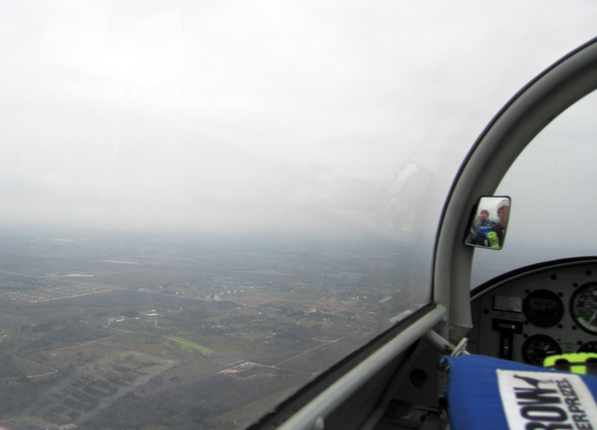
But there must have come a day when I decided that simply putting in hours of turns and practice for my checkride were not enough (I must have figured out that it wouldn’t take that long to climb above the base altitude of the widely scattered cumulus clouds), and for the first time I watched them from above. Like gentle sheep grazing across the green summer fields, the vivid white puffs stood out as if they had been photographed and the contrast enhanced. For the first time, I saw that the clouds didn’t just change shape in some mysterious fashion-they bubbled and boiled as if alive, growing up and out as they moved across the landscape. And while some clouds grew, others died, for no apparent reason. It wasn’t until later that I learned about thermals and sources of moisture-the lifeblood of the summer cumulus.
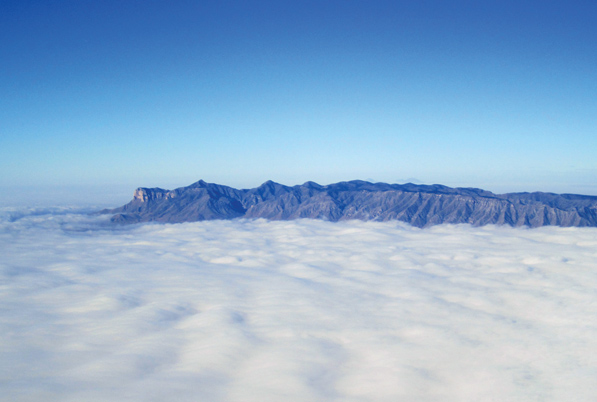
I can’t recall if I told my instructor about my foray above the convection layer. Although the cloud cover couldn’t have been more than 5%, it felt so good and was so amazing, I must have felt that it had to be forbidden-I am, after all, a Minnesotan at heart. Yet this little trip seemed to have no adverse affect on my career as a flier, so it must have been OK. And as I gained my license to go where I wanted, I learned that the air above was always cooler and smoother. Flying along in the gunk seemed to satisfy many who slogged from place to place in their air machines, but I liked the contrast of seeing the clouds moving. I enjoyed watching their shadows cast across the fields and seeing my own shadow, surrounded by that mysterious halo of light and rainbow, cross the tops of the stark white vapor. Always conscious (and fearful) of being stuck “on top” with only a “sucker hole” to lure me to an awful end (I had read all of the classics of aviation literature), I never ventured above if the clouds were more than scattered, and even then, I stayed as close to a safe hole as a chick stays to a hen’s wing.
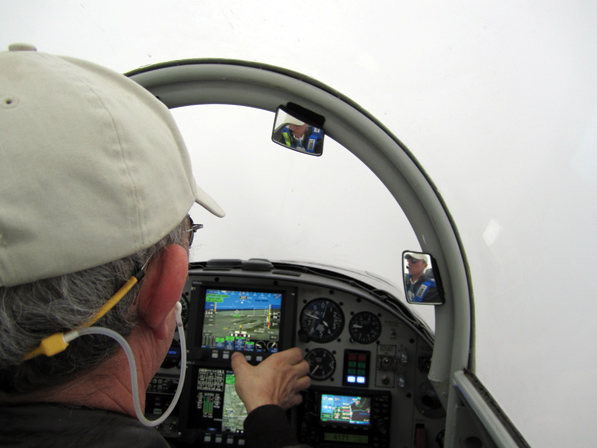
Up Close and Personal
It took a few years before I got that instrument rating tacked onto my ticket, and the clouds became a place to visit “up close and personal.” I have to admit, the first time I approached a big cumulus cloud head-on, instrument clearance secured and everything legal, it was still a tense moment. This wall of white approached at such a speed, then “Whoomp!” in we went, that clammy feeling surrounding us. Motion stopped and the canopy went gray-even the sound of the engine seemed muffled. This was a simple morning cumulus, but it apparently had grand hopes for the afternoon, so the air inside was less than smooth. We bumped and rattled our way through (this was in a time-worn Grumman that had seen tighter days). At first it got darker; then, as the glow of the other side approached, an exit both glorious and amazing. We shot out of what appeared to be a solid cliff of white, as if darting suddenly out over the English Channel at Dover. The blue of the Gulf water below contrasted with the white wall we had exited and hurt the eyes with its combined brilliance.
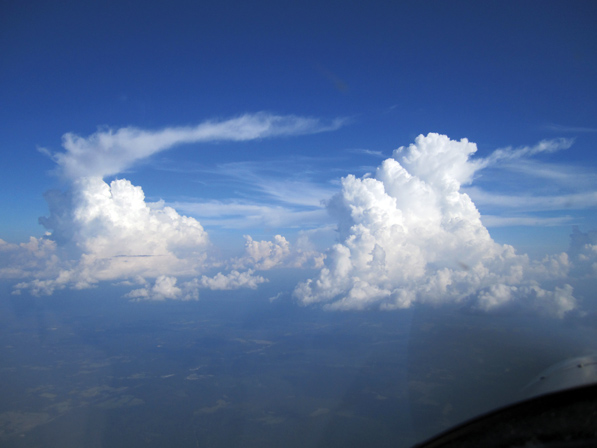
There is nothing quite like the Gulf Coast for cumulus clouds. Back in the day, a pilot could get a block clearance from an obliging approach controller and casually explore the nooks and crannies of these wonders. Dodging and weaving through our little chunk of protected airspace, diving through holes and punching through the walls-we were like fellow children on a vast playground, enjoying a recess from the everyday world. Alas, airspace grew up, and controllers were forced by policy to be less obliging (the block clearance still exists on paper, but is harder and harder to get). We learn our clouds from straight and level, experiencing them as we can-little wisps to big, bulky, city-sized monsters-as we put the miles behind us on a cross-country trip.
Mysteries That Envelop Us
For smooth mystery, nothing beats flying along in a stratus layer, suspended in time and space, with only the instruments to tell the tale of movement. I often use an instrument clearance to depart with a layer above, and am in no hurry to climb on top when I can experience these conditions and feel what it is like to be enveloped. It is that much more stunning when you see the lightening of blue-sky pockets, thin spots in the darkness above. It is like breaking the surface of a murky pond after diving deep and wondering if you will make it back to the air before your lungs run out-that feeling of elation as the blue becomes more apparent and the sun shines through. Leaving a gray, dark world below and popping into the brilliant sunshine of the limitless sky, a world of white spread out below with no end in sight, one might as well be in a spaceship circling a cloud planet in another solar system. These flat layers of clouds transport us, body and soul, to a different dimension, a place where only electronic blips can locate us, and the magic of the sky is our cathedral. Smooth tops without shadows are so different from the canyons of the cumulus. Occasionally, a dark ribbon shows where a minor disturbance in the airflow has created a depression or a thin spot in the deck. Sometimes shadows from a few high clouds entice us to believe that there is a hole up ahead. But mostly we are alone with our thoughts and our airplane, cruising across an endless sea, much as the explorers of old crossed the oceans with nothing to block the flat line of the horizon in any direction.
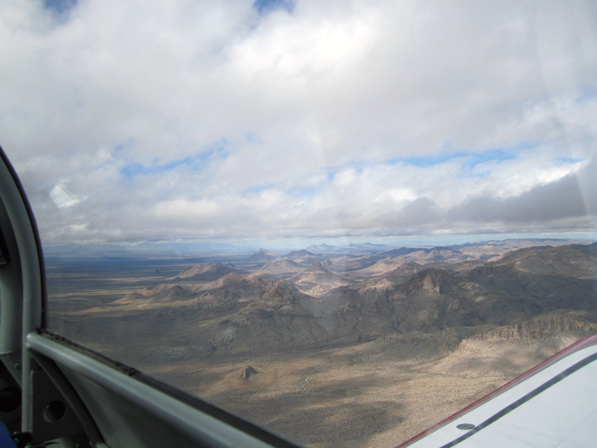
And then, at the end, the dark clouds envelop us as we descend, returning to our home planet-reluctantly, carefully and always with some sense of sadness. We follow that imaginary beam of electrons, those computed equations of motion that tell us precisely where we are relative to some tiny piece of concrete or asphalt. The clouds that envelop us block out the bright sunshine of the journey above, a curtain pulled as unseen stagehands rearrange the scenery. The transition is a way to fool us, just as players on a stage trick us into believing that we have seen that which does not really exist-imaginary worlds that we know only in our memories. As the darkness surrounds our fragile creation of aluminum, plastic or wood, we must force our attention from the brightness we have left above to the darkness below, searching for the terra firma beneath the mists that have us in their grasp. Motion returns as the dark rips appear, the ragged bottoms that we hope will become more numerous as the needles on the altimeter approach the magic numbers that seem so arbitrary, but which ensure that we can do this again someday if we only obey them. The darkness is deeper because of the lightness we have so recently enjoyed. And then the ground appears in a rush, the runway ahead tells us that the flight is all but over, the clouds have once again let us escape their magical hold.
Clouds I Have Known
Oh, the clouds I have known-delightful clouds, brooding clouds, threatening clouds, angry clouds. They are my companions in the air, my playmates and my bullies. They have replaced the schoolyard mates of my youth and surround me every day as I challenge the air and the vastness of the world. Sometimes welcoming, sometimes turning me away. Sometimes with the sound of thunder and the flash of lightning, a warning that the clouds are in no mood to play. Or sometimes the cold temperatures luring me into an icy encounter from which no good can come. Summer clouds and winter clouds, the signposts that tell me it is a good day to soar, to cruise or to simply walk. The world of the air is such an amazing place for those of us who choose to visit. It changes us all, then returns us to the ground with our memories and minds enlarged and enlightened, always for the better, as long as we survive the gaze of nature into which we stare.
